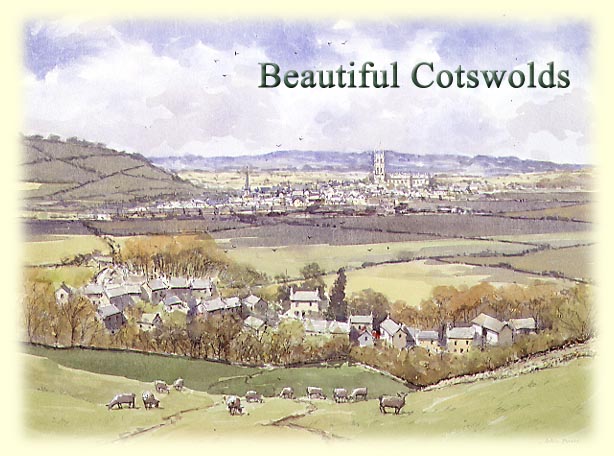
A Watercolour
by John Davis ©
Geologically the Cotswolds is a limestone mass
stretching 100 miles SW by NE with Bath to the south and Chiiping
Campden to the north. The 'wold' iis old English for
'upland common'. These rolling hills are used mainly for sheep
and arable farming. The local breed, 'the Cotswold' can produce
a fleece in excess of 10 Kilos. At one time the area had half
a million sheep and the wool trade with europe was significant.
Flemish weavers were brought to England and the merchants became
wealthier than King. Numerous fine homes and churches were built
from the wealth of this trade. This trade lasted several centuries
but when it was the human devastation was dreadful. It did mean
however that the towns in the Cotswolds have been left undeveloped
as can be seen at places like Chipping Campden. These are now
preservation areas and the villages will remain as they were
built many centuries ago.
Cotswold Stone
The famous stone which colours the landscape,
the homes and the buildings is limestone, found commonly across
England, but is dramatically demonstrated in the Cotswolds.
Here the limestone is oolitic (egg-stone' in Greek), which is
soft when first exposed and continues to harden on contact with
the air - a perfect building material, that can be readily sawn
on quarying. It was used extensively in the Middle Ages - the
finest example being St Paul's Cathedral, London.
The Thatched and Stone Roofs

